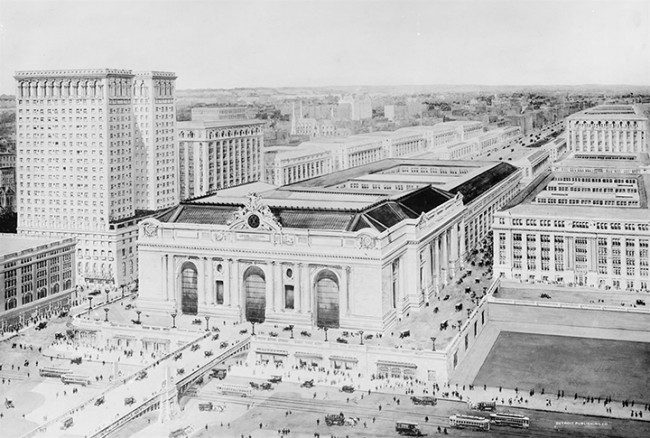Inducted 1999
Grand Central Depot was built in New York City in 1871 by Cornelius Vanderbilt. Its train shed had a magnificent glass roof which arched over 15 sets of tracks. It was on January 4, 1877, the day of Vanderbilt’s death, which a blizzard caused the collapse of the roof, raining glass and iron upon the locomotives and wood cars below. The roof was repaired and in the late 1890’s the building was remodelled, enlarged and renamed Grand Central Terminal, though it is commonly referred to as Grand Central Station.
Following a crash in 1902 the State Legislature outlawed steam locomotives in the tunnel so terminal operations had to be electrified. Due to the increased passenger load the edifice had to be redesigned to handle more trains. The problem was that they had to allow more trains without enlarging the area. William J. Wilgus, the Central’s chief engineer decided to bring trains into the station on two levels. With operations electrified, the tracks could be covered over and the streets and buildings built above.
After 10 years, Grand Central Terminal, which was hewn out of a rock formation, replaced the old station. The upper-level tracks, entered from the main concourse, lie about 20 feet below the street and the lower-level platforms are 26 feet further down. There are 66 tracks on the upper level and 57 on the lower level. The yard below street level contains gloomy caverns, heavy support columns, gleaming rails and red and yellow signal lights.
The building contains a four-faced, globular gilded clock above the main information booth which has been operating since the terminal opened and is known to millions of people. A green bronze statue of Vanderbilt stands on a pedestal outside the terminal to honour the man who first built the station. In its busiest period, the terminal served long-distance and commuter traffic of both the New York Central and the New York, New Haven & Hartford systems.


